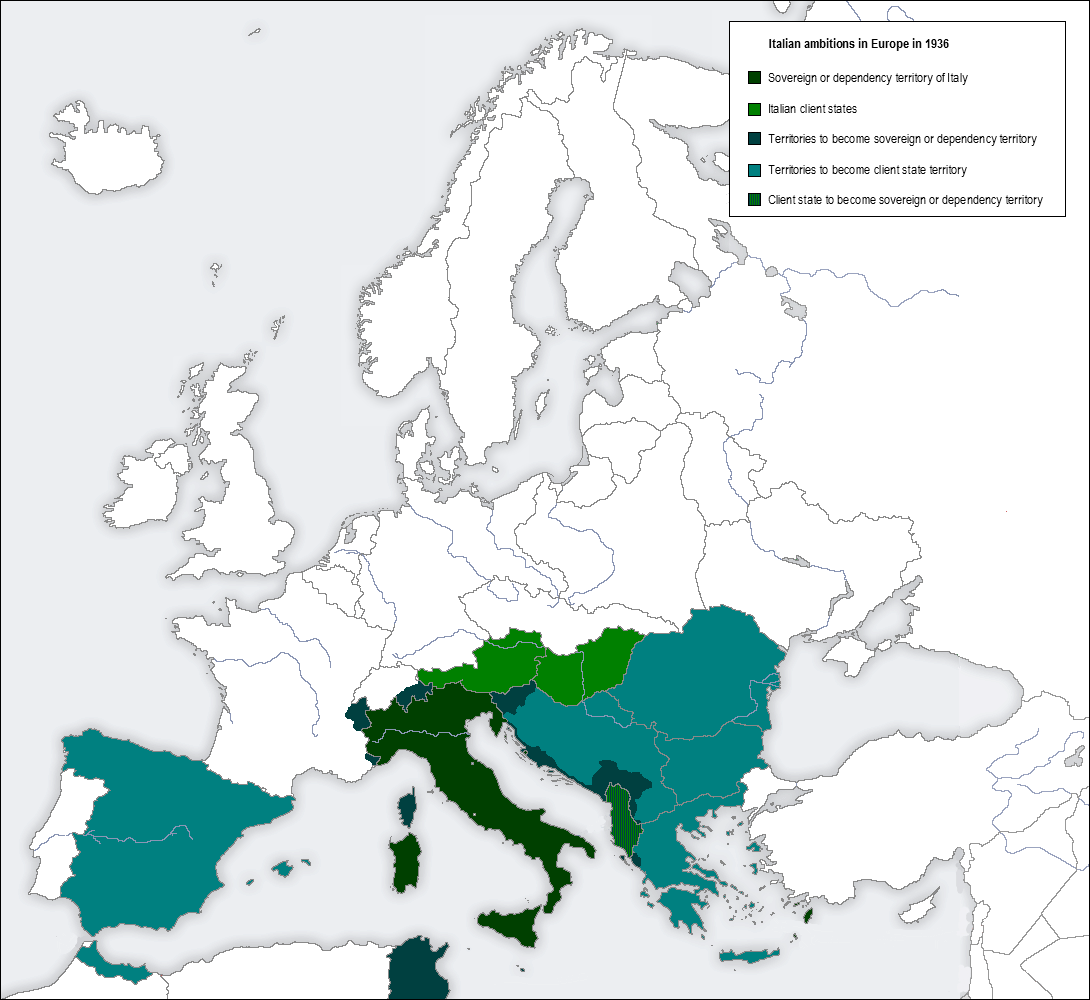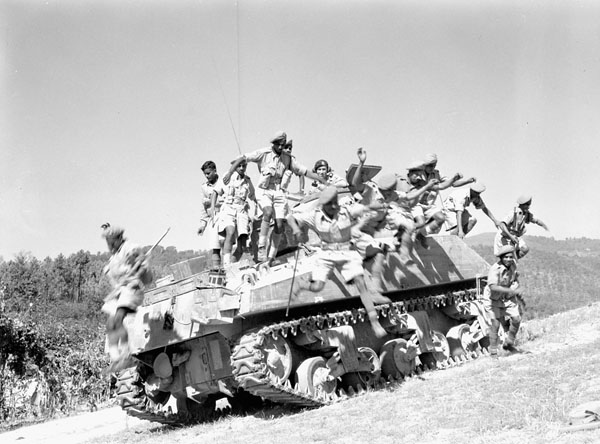|
British Empire In World War II
When the United Kingdom declared war on Nazi Germany in September 1939 at the start of World War II, it controlled to varying degrees numerous Crown colony, crown colonies, Protectorate#British protectorates, protectorates, and British Raj, India. It also maintained strong political ties to four of the five independent Dominions—Australia, Canada, Union of South Africa, South Africa, and New Zealand—as co-members (with the UK) of the British Commonwealth. In 1939 the British Empire and the Commonwealth together comprised a global power, with direct or ''de facto'' political and economic control of 25% of the world's population, and of 30% of its land mass. The contribution of the British Empire and Commonwealth in terms of manpower and materiel was critical to the Allies of World War II, Allied war-effort. From September 1939 to mid-1942, the UK led Allied efforts in multiple global military theatres. Commonwealth, Crown colony, Colonial and India in World War II, Imperial ... [...More Info...] [...Related Items...] OR: [Wikipedia] [Google] [Baidu] |
Balfour Declaration Of 1926
The Balfour Declaration of 1926 was issued by the 1926 Imperial Conference of British Empire The British Empire comprised the dominions, Crown colony, colonies, protectorates, League of Nations mandate, mandates, and other Dependent territory, territories ruled or administered by the United Kingdom and its predecessor states. It bega ... leaders in London. It was named after Arthur Balfour, who was Lord President of the Council. It declared the United Kingdom and the Dominions to be: The Inter-Imperial Relations Committee, chaired by Balfour, drew up the document preparatory to its unanimous approval by the imperial prime ministers on 15 November 1926. It was first proposed by Union of South Africa, South African Prime Minister J. B. M. Hertzog and Canada, Canadian Prime Minister of Canada, Prime Minister William Lyon Mackenzie King. The declaration accepted the growing political and diplomatic independence of the Dominions in the years after World War I. It also re ... [...More Info...] [...Related Items...] OR: [Wikipedia] [Google] [Baidu] |
Battle Of Britain
The Battle of Britain () was a military campaign of the Second World War, in which the Royal Air Force (RAF) and the Fleet Air Arm (FAA) of the Royal Navy defended the United Kingdom (UK) against large-scale attacks by Nazi Germany's air force, the Luftwaffe. It was the first major military campaign fought entirely by air forces."92 Squadron – Geoffrey Wellum." ''Battle of Britain Memorial Flight'' via ''raf.mod.uk.''. Retrieved: 17 November 2010, archived 2 March 2009. It takes its name from This was their finest hour, the speech given by Prime Minister Winston Churchill to the House of Commons of the United Kingdom, House of Commons on 18 June: "What Maxime Weygand, General Weygand called the 'Battle of France' is over. I expect that the Battle ... [...More Info...] [...Related Items...] OR: [Wikipedia] [Google] [Baidu] |
Luftwaffe
The Luftwaffe () was the aerial warfare, aerial-warfare branch of the before and during World War II. German Empire, Germany's military air arms during World War I, the of the Imperial German Army, Imperial Army and the of the Imperial German Navy, Imperial Navy, had been disbanded in May 1920 in accordance with the terms of the 1919 Treaty of Versailles, which banned Germany from having any air force. During the interwar period, German pilots were trained secretly in violation of the treaty at Lipetsk (air base), Lipetsk Air Base in the Soviet Union. With the rise of the Nazi Party and the repudiation of the Versailles Treaty, the Luftwaffe's existence was publicly acknowledged and officially established on 26 February 1935, just over two weeks before open defiance of the Versailles Treaty through German rearmament and conscription would be announced on 16 March. The Condor Legion, a Luftwaffe detachment sent to aid Nationalist faction (Spanish Civil War), Nationalist for ... [...More Info...] [...Related Items...] OR: [Wikipedia] [Google] [Baidu] |
Northwestern Europe
Northwestern Europe, or Northwest Europe, is a loosely defined subregion of Europe, overlapping Northern and Western Europe. The term is used in geographic, history, and military contexts. Geographic definitions Geographically, Northwestern Europe is given by some sources as a region which includes Great Britain, Ireland, Belgium, the Netherlands, Luxembourg, Northern France, parts of or all of Germany, Denmark, Norway, Sweden, and Iceland. In some works, Switzerland, Finland, and Austria are also included as part of Northwestern Europe. Under the Interreg program, funded by the European Regional Development Fund, "North-West Europe" (NWE) is a region of European Territorial Cooperation that includes Belgium, Ireland, Luxembourg, Switzerland, the Netherlands and parts of France and Germany. Ethnography During the Reformation, some parts of Northwestern Europe converted to Protestantism, in a manner which differentiated the region from its Roman Catholic neighbors elsewhe ... [...More Info...] [...Related Items...] OR: [Wikipedia] [Google] [Baidu] |
Axis Powers
The Axis powers, originally called the Rome–Berlin Axis and also Rome–Berlin–Tokyo Axis, was the military coalition which initiated World War II and fought against the Allies of World War II, Allies. Its principal members were Nazi Germany, Fascist Italy, Kingdom of Italy and the Empire of Japan. The Axis were united in their far-right positions and general opposition to the Allies, but otherwise lacked comparable coordination and ideological cohesion. The Axis grew out of successive diplomatic efforts by Germany, Italy, and Japan to secure their own specific expansionist interests in the mid-1930s. The first step was the Italo-German protocol of 23 October 1936, protocol signed by Germany and Italy in October 1936, after which Italian leader Benito Mussolini declared that all other European countries would thereafter rotate on the Rome–Berlin axis, thus creating the term "Axis". The following November saw the ratification of the Anti-Comintern Pact, an anti-communis ... [...More Info...] [...Related Items...] OR: [Wikipedia] [Google] [Baidu] |
Japan During World War II
Japan participated in World War II from 1939 to 1945 as a member of the Axis. World War II and the Second Sino-Japanese War encapsulate a significant period in the history of the Empire of Japan, marked by significant military campaigns and geopolitical maneuvers across the Asia-Pacific region. Spanning from the early 1930s to 1945, Japan employed expansionist policies and aggressive military actions, including the invasion of the Republic of China, and the annexation of French Indochina. In 1941, Japan attempted to improve relations with the United States in order to reopen trade, especially for oil, but was rebuffed. On 8 December, 1941, Japan attacked multiple American and British positions in the Pacific. The Pacific War, a major theater of World War II, further intensified Japan's engagements, leading to significant confrontations with Allied forces in the Pacific Ocean and Southeast Asia. Although initially successful, Japan took significant losses at the Battle of Midway ... [...More Info...] [...Related Items...] OR: [Wikipedia] [Google] [Baidu] |
Military History Of Italy During World War II
The participation of Italy in the Second World War was characterized by a complex framework of ideology, politics, and diplomacy, while its military actions were often heavily influenced by external factors. Fascist Italy (1922–1943), Italy joined the war as one of the Axis Powers in 1940 (as the French Third Republic surrendered) with a plan to concentrate Italian forces on a major offensive against the British Empire in Africa and the Middle East, known as the "parallel war", while expecting the collapse of British forces in the European theatre of World War II, European theatre. The Italians Italian bombing of Mandatory Palestine in World War II, bombed Mandatory Palestine, Italian invasion of Egypt, invaded Egypt and Italian conquest of British Somaliland, occupied British Somaliland with initial success. As the war carried on and German and Japanese actions in 1941 led to the entry of the Soviet Union and United States, respectively, into the war, the Italian plan of fo ... [...More Info...] [...Related Items...] OR: [Wikipedia] [Google] [Baidu] |
Wehrmacht
The ''Wehrmacht'' (, ) were the unified armed forces of Nazi Germany from 1935 to 1945. It consisted of the German Army (1935–1945), ''Heer'' (army), the ''Kriegsmarine'' (navy) and the ''Luftwaffe'' (air force). The designation "''Wehrmacht''" replaced the previously used term (''Reich Defence'') and was the manifestation of the Nazi regime's efforts to German rearmament, rearm Germany to a greater extent than the Treaty of Versailles permitted. After the Adolf Hitler's rise to power, Nazi rise to power in 1933, one of Adolf Hitler's most overt and bellicose moves was to establish the ''Wehrmacht'', a modern offensively-capable armed force, fulfilling the Nazi regime's long-term goals of regaining lost territory as well as gaining new territory and dominating its neighbours. This required the reinstatement of conscription and massive investment and Military budget, defence spending on the arms industry. The ''Wehrmacht'' formed the heart of Germany's politico-military po ... [...More Info...] [...Related Items...] OR: [Wikipedia] [Google] [Baidu] |
Military Production During World War II
Military production during World War II was the production or mobilization of arms, ammunition, personnel and financing by the belligerents of the war, from the occupation of Austria in early 1938 to the surrender and occupation of Japan in late 1945. The mobilization of funds, people, natural resources and material for the production and supply of military equipment and military forces during World War II was a critical component of the war effort. During the conflict, the Allies outpaced the Axis powers in most production categories. Access to the funding and industrial resources necessary to sustain the war effort was linked to their respective economic and political alliances. Historical context During the 1930s, political forces in Germany increased their financial investment in the military to develop the armed forces required to support near and long-term political and territorial goals. Germany's economic, scientific, research, and industrial capabilities were one of t ... [...More Info...] [...Related Items...] OR: [Wikipedia] [Google] [Baidu] |
India In World War II
During the Second World War (1939–1945), India was a part of the British Empire. British Raj, British India officially declared war on Nazi Germany in September 1939. India, as a part of the Allies of World War II, Allied Nations, sent over two and a half million soldiers to fight under British command against the Axis powers. India was also used as the base for American operations in support of China in the China Burma India Theater. Indians fought throughout the world, including in the European theatre of World War II, European theatre against Germany, North African Campaign against Fascist Italy (1922–1943), fascist Italy, and in the South-East Asian theatre of World War II, southeast Asian theatre; while also defending the Indian subcontinent against the Japanese forces, including British Burma and the Crown colony of Ceylon. Indian troops were also redeployed in former colonies such as Singapore and Hong Kong, with the Japanese surrender in August 1945, after the ... [...More Info...] [...Related Items...] OR: [Wikipedia] [Google] [Baidu] |
Allies Of World War II
The Allies, formally referred to as the United Nations from 1942, were an international Coalition#Military, military coalition formed during World War II (1939–1945) to oppose the Axis powers. Its principal members were the "Four Policemen, Big Four" – the United Kingdom, United States, Soviet Union, and Republic of China (1912–1949), China. Membership in the Allies varied during the course of the war. When the conflict broke out on 1 September 1939, the Allied coalition consisted of the United Kingdom, French Third Republic, France, and Second Polish Republic, Poland, as well as their respective Dependent territory, dependencies, such as British Raj, British India. They were joined by the independent dominions of the British Commonwealth: Canada, Australia, Dominion of New Zealand, New Zealand and Union of South Africa, South Africa. Consequently, the initial alliance resembled Allies of World War I, that of the First World War. As Axis forces began German invasion of ... [...More Info...] [...Related Items...] OR: [Wikipedia] [Google] [Baidu] |







